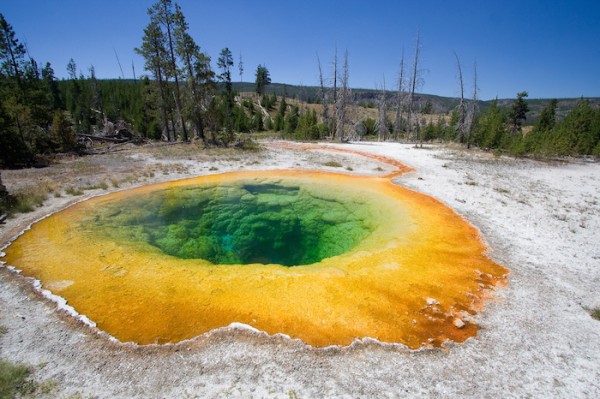Yellowstone’s Famed Thermal Pools Got Their Unique Colors from Pollution, New Study Finds
Dec 21, 2014 11:53 AM EST

The fascinating thermal pools of Yellowstone National Park were not always colored the way they are and got that way essentially through pollution.
Like Us on Facebook
According to the Los Angeles Times, authors of a study published in the journal Applied Optics found the pools were probably once blue. With names like Morning Glory Pool, Grand Prismatic Spring and Sapphire Pool, the famous thermal pools now give off colors of the rainbow.
“As a result of coins, trash, and rocks thrown into the pool over time, the vent has become partially blocked, leading to a lower temperature and altered color pattern,” the researchers wrote in the study.
Yellowstone is situation mainly in Wyoming, but stretches into Idaho and Montana as well. It was deemed a national park in 1872 and the pools were probably a deep blue at that time.
“What we were able to show is that you really don’t have to get terribly complex – you can explain some very beautiful things with relatively simple models,” study co-author Joseph Shaw, a professor at Montana State University and director of the university’s Optical Technology Center, said in a press release. “We didn’t start this project as experts on thermal pools.
“We started this project as experts on optical phenomena and imaging, and so we had a lot to learn.”
The magma-heated pools range in temperatures from 140 degrees Fahrenheit to nearly 200 and the prismatic colors come from the interaction with the pollution.
“There are people at my university who are world experts in the biological side of what’s going on in the pools,” Shaw said. “They’re looking for ways to monitor changes in the biology – when the biology changes, that causes color changes – so we’re actually looking at possibilities of collaborating in the future.”
© 2014 University Daily News, All rights reserved. Do not reproduce without permission.
Get Our FREE Newsletters
